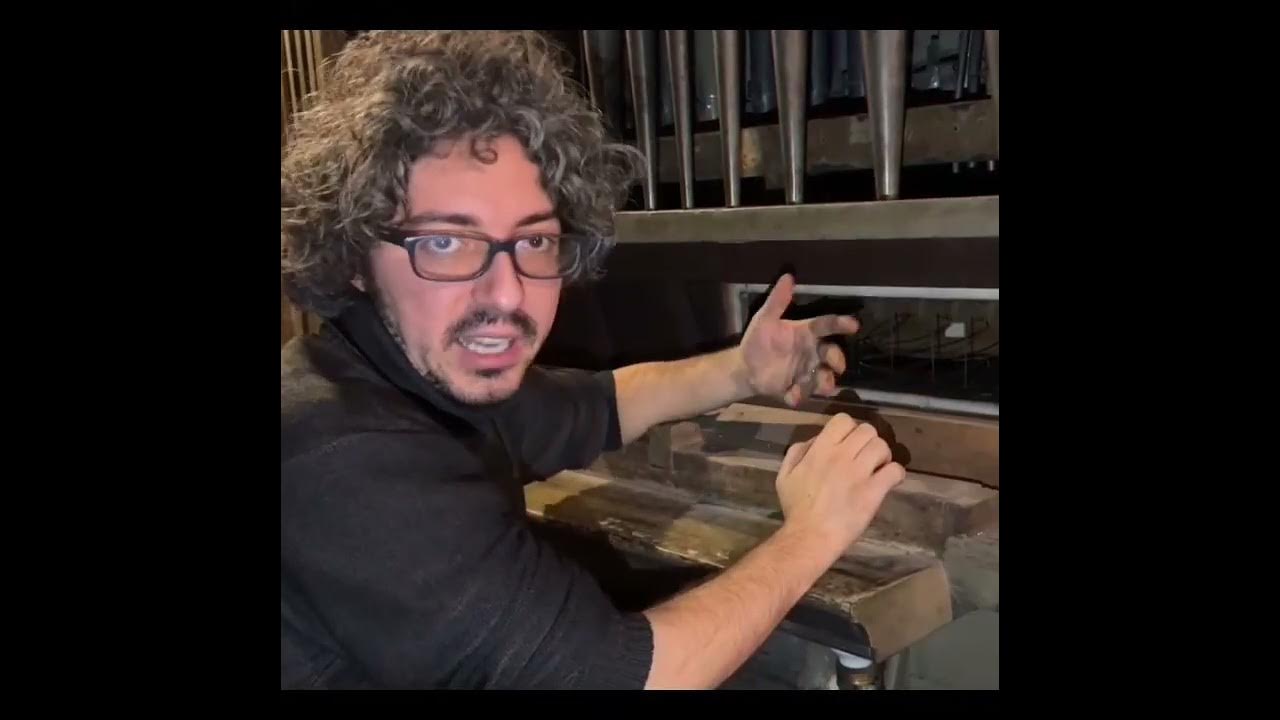Wood anatomy (4) hardwood cutting planes
Summary
TLDRThis video explores the distinct characteristics of hardwood and softwood when cut through different planes. It explains how hardwoods, such as oak, display unique features like multi-seriate ray cells and ring-porous structures, creating attractive patterns in quarter-sawn cuts. Softwoods, on the other hand, are less visually distinct due to their unicellular rays. The video delves into the different appearances seen in radial, tangential, and transverse cuts, highlighting how these wood types can be identified by their growth rings and pores. It offers valuable insights into how wood species can be differentiated based on their cut patterns and internal structure.
Takeaways
- 😀 Hardwoods have three primary axes: longitudinal, radial, and tangential, with each affecting the wood's structure and appearance.
- 😀 A radial longitudinal section of hardwood reveals visible growth rings and bundles of ray cells, known as multiseriate rays.
- 😀 The bundles of ray cells in hardwoods, especially oak, create attractive patterns that are often referred to as the 'figure' of the wood.
- 😀 Oak is a classic example of wood with visible multiseriate rays when quarter-sawn, making it highly desirable for furniture due to its aesthetic appeal.
- 😀 Quarter-sawing hardwoods, especially oak, helps display the attractive figure created by the rays and growth rings.
- 😀 Ring porous woods like oak have large pores during the spring growth season, making their growth rings visible and distinct.
- 😀 Ash also has a ring porous structure but is less visually striking in terms of visible rays compared to oak.
- 😀 The tangential cut of oak displays growth rings and multiseriate rays more clearly, contributing to the overall appearance of the wood.
- 😀 Softwoods, unlike hardwoods, have unicellular rays, which are not visible in a tangential cut.
- 😀 Transverse cuts through hardwoods reveal pores, which can help in identifying different wood species.
Q & A
What are the main axes mentioned in the script when describing the structure of hardwood?
-The main axes mentioned are the longitudinal axis, the radial axis, and the tangential axis. The tangential axis runs at 90 degrees to the radial.
What is the significance of the multiseriate rays in hardwoods?
-The multiseriate rays are bundles of ray cells that run through the wood, often creating an attractive figure in the wood's appearance. They are particularly noticeable when viewed in a radial longitudinal section.
What is the appearance of a radial longitudinal section in hardwood?
-In a radial longitudinal section, growth rings are visible, and the multiseriate rays are often clearly seen running through the wood. These rays can extend across the entire section or may appear to wiggle in and out.
How does the cutting direction affect the appearance of oak wood?
-When oak is cut along the radius (quarter sawn), it creates an attractive pattern due to the visibility of the multiseriate rays and the ring porous structure, which is highly sought after in furniture making.
What is the term 'quarter sawn' and why is it used in furniture making?
-'Quarter sawn' refers to the technique of cutting wood along the radius of the tree, which enhances the appearance of the wood by exposing the attractive grain patterns, particularly in hardwoods like oak.
What are ring porous structures in hardwoods, and how do they appear?
-Ring porous structures are characterized by large pores in the growth rings, particularly visible in species like oak. These pores are formed when sap conduction is most needed during the spring growth season.
What distinguishes oak as a ring porous wood species?
-Oak is classified as a ring porous species because its growth rings contain numerous large pores that are most visible during the spring. This feature is a key reason oak is valued for its appearance in woodworking.
How do the rays in hardwoods differ from those in softwoods?
-In hardwoods, the rays are typically larger, more visible, and may be multiseriate. In contrast, softwoods usually have unicellular rays, which are much less noticeable.
What is the appearance of a tangential cut of oak wood?
-A tangential cut of oak reveals growth rings made up of pores, along with the visibility of multiseriate rays. The rays are more obvious in this cut compared to softwoods.
Why are the pores in oak wood especially noticeable in the transverse plane?
-In the transverse plane, the pores appear as visible spots, allowing for easier identification of species like oak. These pores are crucial for sap conduction during growth, contributing to oak's distinct appearance.
Outlines

This section is available to paid users only. Please upgrade to access this part.
Upgrade NowMindmap

This section is available to paid users only. Please upgrade to access this part.
Upgrade NowKeywords

This section is available to paid users only. Please upgrade to access this part.
Upgrade NowHighlights

This section is available to paid users only. Please upgrade to access this part.
Upgrade NowTranscripts

This section is available to paid users only. Please upgrade to access this part.
Upgrade Now5.0 / 5 (0 votes)





